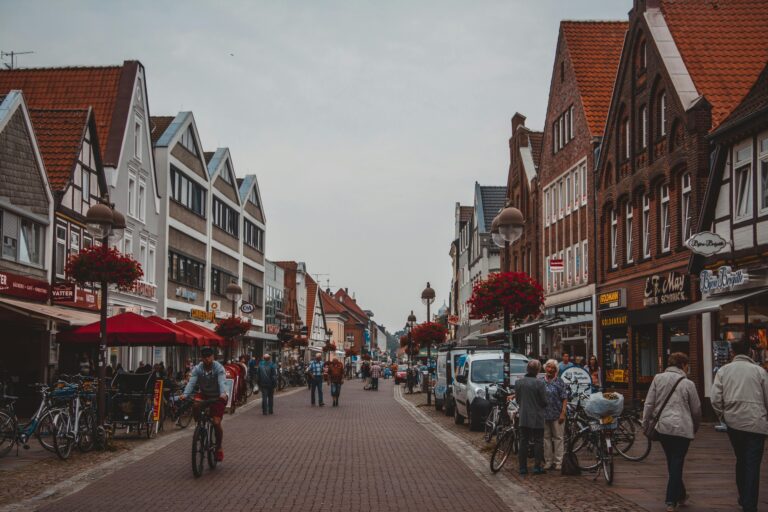In recent years, neighborhood centers have replaced traditional malls in the retail real estate landscape. Changes in consumer preferences, economic factors, and the development of the retail industry are the driving forces behind this transformation. As we examine this shift, we will also highlight other prevailing trends in the retail real estate and commercial property industries.
The Rise of Neighborhood Centers
Neighborhood venues are preferred and highly sought after due to their modest size and community-oriented approach. Unlike the rambling and crammed malls, these areas are designed to serve local communities. Furthermore, offering a mix of essential services, restaurants and retail etc. This trend stems from several factors:
Convenience and Accessibility:
Consumers today are all about convenience and accessibility. Neighborhood centers are mostly located within residential areas. This makes it easier to meet daily needs without the burden of unnecessary, long commutes. In an era where time is a valuable commodity, this ease is truly remarkable.
Personalized Shopping Experience:
Neighborhood centers offer a more personalized and community-focused shopping experience. Smaller local businesses often establish themselves in these prime locations. This gives customers a sense of community and loyalty.
Adaptability to Market Changes:
Neighborhood centers are quickly able to adjust to the shifting market demands and trends due to their adaptive nature. New trends, such as the emergence of stores and experiential shopping concepts, can be easily incorporated while keeping the shopping experience fresh and engaging.
The Downfall of Traditional Malls
The downfall of traditional malls is a notable trend in the retail real estate market. Several factors contribute to this shift:
E-Commerce Boom:
The rise of e-commerce has a significant impact on traditional retail outlets. Online shopping is increasingly preferred by consumers negatively impacting the mall foot traffic. As a result, many retailers are rethinking their physical store strategies, focusing on smaller spaces in prime locations.
Changing Consumer Preferences:
Modern consumers seek experiences rather than just products. Malls are often perceived as monolithic and impersonal, and struggle to meet this demand. In contrast, Neighborhood centers are better positioned to cater to experiential customers, emphasizing unique and local offerings.
Economic Considerations:
Due to financial pressures the retailers are left no choice but to downsize to more manageable and cost-effective locations like neighborhood centers. The cost of maintaining and operating large malls is critical making community centers a more economical and an attractive option.
Other Trends In Commercial Property and Retail Real Estate
The shift to neighborhood centers is a significant trend. However, several other developments are shaping the commercial property and retail real estate sectors:
Sustainability and Green Buildings
Sustainability is no longer a major concern. It has become a top priority. Tenants and investors are looking for commercial properties that prioritize environmental sustainability. Features such as energy efficient HVAC systems, solar panels and sustainable building materials are in high demand. Green buildings not only reduce environmental footprint, but also provide long-term cost savings and attract eco-conscious buyers.
Technological Integration
Technology continues to revolutionize commercial property and retail real estate. The application of smart building technologies, like IoT gadgets, improves energy management, security, and maintenance. Additionally, big data and analytics are enabling more informed decision-making by providing valuable insights into tenant behavior, occupancy rates, and market trends.
Flexible Workspaces
The rise of remote and hybrid work models is reshaping the commercial property landscape. Companies are increasingly seeking flexible office spaces that can accommodate both individual and remote employees. This trend is driving demand for co working spaces and adaptive office environments that offer flexible lease terms and collaborative workspaces.
Mixed-Use Developments
Mixed-use developments comprise of residential, commercial, and recreational spaces which are gaining popularity. These developments create vibrant and walkable communities. These communities offer convenience and a high quality of life. In a volatile market, mixed-use projects are an appealing option because they offer investors and developers a variety of income streams and lower risk.
Adaptive Reuse of Properties
The practice of repurposing old structures for new objectives and goals is an appealing option. This method protects architectural and historical treasures. Moreover, it lessens the negative environmental impact caused by demolition and new construction. The strategy of converting outdated warehouses, factories, and office buildings into modern office spaces, residential units, or mixed-use developments is highly in demand.
Resilience and Risk Management
With frequent and severe natural disasters, resilience and risk management in commercial real estate are significant. Property owners are investing in resilient infrastructure and building designs, such as earthquake-resistant construction, floodproofing, and improved fire safety measures. In addition, comprehensive insurance policies are extensively being used in property management and development.
Conclusion
A significant shift in retail real estate and commercial property has occurred as neighborhood centers replace traditional malls. This pattern reflects the changing needs of present day customers and is driven by moving consumer inclinations, financial variables, and technological progressions. As sustainability, technology integration, flexible workspaces, mixed-use developments, adaptive reuse, and resilience have become integral. Stakeholders in the commercial and retail real estate sectors need to remain informed and flexible, in order to successfully navigate through these changes . The future of retail land promises to be dynamic, creative, and full of possibilities.


